-
 Bitcoin
Bitcoin $76,444.7530
-3.77% -
 Ethereum
Ethereum $1,473.8355
-5.46% -
 Tether USDt
Tether USDt $0.9991
-0.08% -
 XRP
XRP $1.7965
-5.51% -
 BNB
BNB $553.4919
-0.36% -
 USDC
USDC $0.9999
-0.02% -
 Solana
Solana $105.2981
-1.74% -
 TRON
TRON $0.2303
0.81% -
 Dogecoin
Dogecoin $0.1422
-4.62% -
 Cardano
Cardano $0.5587
-4.41% -
 UNUS SED LEO
UNUS SED LEO $8.9866
1.01% -
 Toncoin
Toncoin $2.9933
-4.74% -
 Chainlink
Chainlink $10.9113
-4.81% -
 Stellar
Stellar $0.2215
-4.76% -
 Avalanche
Avalanche $16.1163
-3.29% -
 Sui
Sui $1.9371
-3.89% -
 Shiba Inu
Shiba Inu $0.0...01065
-6.69% -
 Hedera
Hedera $0.1469
-3.29% -
 MANTRA
MANTRA $6.2058
-1.53% -
 Dai
Dai $1.0000
0.01% -
 Bitcoin Cash
Bitcoin Cash $269.3457
-2.08% -
 Polkadot
Polkadot $3.3773
-5.87% -
 Litecoin
Litecoin $69.2204
-2.50% -
 Ethena USDe
Ethena USDe $0.9986
-0.01% -
 Bitget Token
Bitget Token $4.0180
-3.25% -
 Pi
Pi $0.5649
-4.50% -
 Hyperliquid
Hyperliquid $11.1928
-2.80% -
 Monero
Monero $195.3885
-4.41% -
 OKB
OKB $50.9235
-0.59% -
 Uniswap
Uniswap $4.7688
-6.95%
What is the difference between leveraged and contract trading in terms of forced liquidation mechanisms?
Leveraged trading uses borrowed funds to amplify positions, with liquidation triggered by falling below the maintenance margin, while contract trading involves complex margin requirements and expiration dates.
Apr 07, 2025 at 02:14 am
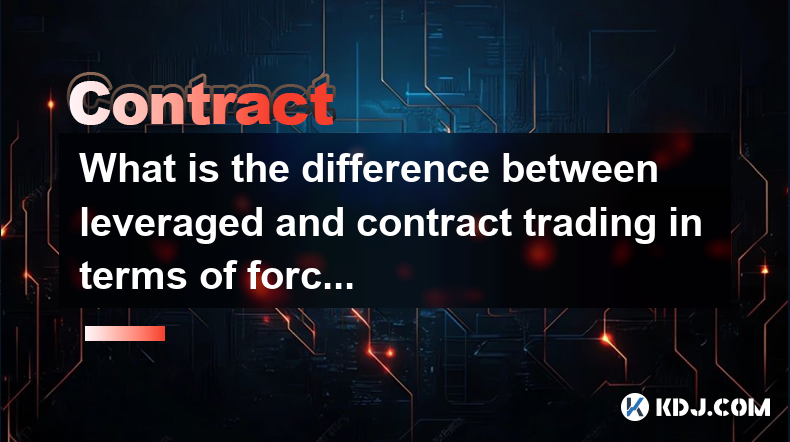
Leveraged trading and contract trading are popular methods used in the cryptocurrency market to amplify potential returns. Both methods involve borrowing funds to increase trading positions, but they differ significantly in terms of forced liquidation mechanisms. Understanding these differences is crucial for traders to manage risk effectively. In this article, we will explore the nuances of leveraged trading and contract trading, focusing specifically on how forced liquidation works in each context.
What is Leveraged Trading?
Leveraged trading involves using borrowed funds to increase the size of a trading position. This method allows traders to potentially amplify their profits but also increases the risk of significant losses. In leveraged trading, the forced liquidation mechanism is triggered when the value of the trader's account falls below a certain threshold, known as the maintenance margin.
Maintenance Margin: This is the minimum amount of equity that must be maintained in the account to keep the position open. If the account balance falls below this level, the broker will initiate a liquidation to cover the borrowed funds.
Margin Call: Before reaching the maintenance margin, traders often receive a margin call, which is a warning that their account is approaching the liquidation point. This gives them a chance to add more funds to their account or close positions to avoid liquidation.
Liquidation Process: When the account balance falls below the maintenance margin, the broker automatically closes the position to prevent further losses. The assets are sold at the current market price, which may be lower than the entry price, resulting in a loss for the trader.
What is Contract Trading?
Contract trading, often referred to as futures or derivatives trading, involves entering into a contract to buy or sell an asset at a predetermined price in the future. These contracts can be leveraged, meaning traders can control a larger position with a smaller initial investment. The forced liquidation mechanism in contract trading is more complex and involves several factors, including the contract's expiration date and the trader's margin requirements.
Initial Margin: This is the amount of money required to open a futures contract. It acts as a deposit to secure the position and is usually a percentage of the contract's total value.
Variation Margin: As the market price of the underlying asset changes, the account's equity fluctuates. If the account's equity falls below the maintenance margin, the trader must deposit additional funds (variation margin) to keep the position open.
Liquidation Trigger: In contract trading, forced liquidation occurs when the account's equity falls below the maintenance margin and the trader fails to meet the margin call. The exchange will then liquidate the position to cover the losses.
Contract Expiration: Unlike leveraged trading, contract trading involves an expiration date. If the contract is not closed or rolled over before expiration, it will be settled at the current market price, which can trigger liquidation if the trader's account is in a deficit.
Key Differences in Forced Liquidation Mechanisms
The forced liquidation mechanisms in leveraged trading and contract trading have several key differences that traders need to understand to manage their risk effectively.
Trigger Points: In leveraged trading, liquidation is primarily triggered by the account balance falling below the maintenance margin. In contract trading, liquidation can be triggered by both the account balance and the contract's expiration date.
Margin Requirements: Leveraged trading typically involves a single margin requirement (maintenance margin), while contract trading involves both an initial margin and a variation margin. The complexity of margin requirements in contract trading can lead to more frequent margin calls and potential liquidations.
Market Impact: The liquidation process in leveraged trading can be immediate and may result in selling assets at unfavorable prices. In contract trading, the liquidation process can be influenced by the contract's expiration, potentially allowing for more strategic management of positions.
Risk Management: Leveraged trading often requires more active monitoring of account balances and market conditions to avoid sudden liquidations. Contract trading, on the other hand, requires understanding both the market movements and the contract's lifecycle to manage risk effectively.
Examples of Forced Liquidation in Leveraged Trading
To better understand how forced liquidation works in leveraged trading, let's consider a few hypothetical examples:
Example 1: A trader opens a leveraged position with a $10,000 account balance and borrows an additional $40,000 to control a $50,000 position. The maintenance margin is set at 20%, meaning the account must maintain at least $10,000 (20% of $50,000). If the market moves against the trader and the account balance drops to $9,000, the broker will initiate a liquidation to cover the borrowed funds.
Example 2: Another trader uses a 10x leverage to open a $100,000 position with a $10,000 account balance. The maintenance margin is 10%, requiring a minimum of $10,000. If the market fluctuates and the account balance drops to $8,000, the trader receives a margin call. If the trader fails to add funds, the position will be liquidated at the current market price.
Examples of Forced Liquidation in Contract Trading
Contract trading involves more complex scenarios due to the interplay between market movements and contract expiration. Here are some examples to illustrate forced liquidation in this context:
Example 1: A trader enters a futures contract to buy 10 Bitcoins at $30,000 each, with an initial margin of $3,000 per Bitcoin. The total initial margin is $30,000. If the market price of Bitcoin drops to $27,000, the trader's account equity decreases. If the account equity falls below the maintenance margin (e.g., $2,700 per Bitcoin), the trader must deposit additional funds (variation margin) to avoid liquidation.
Example 2: Another trader enters a contract to sell 5 Ethereum at $2,000 each, with an initial margin of $200 per Ethereum. The total initial margin is $1,000. If the market price of Ethereum rises to $2,200, the trader's account equity decreases. If the account equity falls below the maintenance margin (e.g., $180 per Ethereum), the trader must deposit additional funds. If the contract expires and the trader's account is in a deficit, the exchange will liquidate the position.
Strategies to Avoid Forced Liquidation
Traders can employ several strategies to avoid forced liquidation in both leveraged and contract trading. Here are some effective approaches:
Set Stop-Loss Orders: Using stop-loss orders can help limit potential losses by automatically closing positions when the market moves against the trader. This can prevent the account balance from falling below the maintenance margin.
Monitor Margin Levels: Regularly checking the account's margin levels and responding to margin calls promptly can help avoid liquidation. Traders should be prepared to add funds or close positions if necessary.
Diversify Positions: Spreading investments across different assets can reduce the risk of a single position triggering a liquidation. Diversification can help maintain a healthy account balance.
Understand Contract Terms: For contract trading, understanding the contract's terms, including expiration dates and margin requirements, is crucial. Traders should plan their positions and exits accordingly to avoid unexpected liquidations.
Use Lower Leverage: Trading with lower leverage can reduce the risk of forced liquidation. While it may limit potential profits, it also provides a buffer against market volatility.
Common Questions and Answers
Q: What is the main difference between leveraged and contract trading in terms of forced liquidation mechanisms?
A: The main difference lies in the trigger points and margin requirements. Leveraged trading's liquidation is primarily triggered by the account balance falling below the maintenance margin, while contract trading involves both the account balance and the contract's expiration date. Contract trading also has more complex margin requirements, including initial and variation margins.
Q: How can traders avoid forced liquidation in leveraged trading?
A: Traders can avoid forced liquidation in leveraged trading by setting stop-loss orders, monitoring margin levels, diversifying their positions, and using lower leverage. Responding promptly to margin calls and adding funds when necessary can also help prevent liquidation.
Q: What are the key factors that trigger forced liquidation in contract trading?
A: The key factors that trigger forced liquidation in contract trading are the account's equity falling below the maintenance margin, the trader's failure to meet margin calls, and the contract's expiration date. If the account is in a deficit at expiration, the exchange will liquidate the position.
Q: Why is understanding contract terms important in contract trading?
A: Understanding contract terms, including expiration dates and margin requirements, is crucial in contract trading because it allows traders to plan their positions and exits effectively. This can help avoid unexpected liquidations and manage risk more efficiently.
Q: Can using lower leverage help prevent forced liquidation?
A: Yes, using lower leverage can help prevent forced liquidation by providing a buffer against market volatility. While it may limit potential profits, it reduces the risk of the account balance falling below the maintenance margin, thereby avoiding liquidation.
Disclaimer:info@kdj.com
The information provided is not trading advice. kdj.com does not assume any responsibility for any investments made based on the information provided in this article. Cryptocurrencies are highly volatile and it is highly recommended that you invest with caution after thorough research!
If you believe that the content used on this website infringes your copyright, please contact us immediately (info@kdj.com) and we will delete it promptly.
- "Cardano (ADA) Price Could Dip Below $0.60, Following Previous Market Cycle"
- 2025-04-09 05:10:12
- BONK, the well-known meme coin, has risen over 35% in the last week, attracting meme coin investors in the market. So, what caused this rally?
- 2025-04-09 05:10:12
- Bitcoin (BTC) Investors May Not Exactly Feel It, but BTC Has Been a Relatively Good Bet
- 2025-04-09 05:05:12
- Donald's Bitcoin (DONBTC) Could Turn Early Investors into Multi-Millionaires, Like Shiba Inu (SHIB) and Dogecoin (DOGE) Did
- 2025-04-09 05:05:12
- 6 Upcoming Kraken Listings That Could Be the Next Big Thing in Crypto
- 2025-04-09 05:00:13
- COTI Unveils New Privacy-Focused Blockchain to Reshape Web3 Transactions
- 2025-04-09 05:00:13
Related knowledge
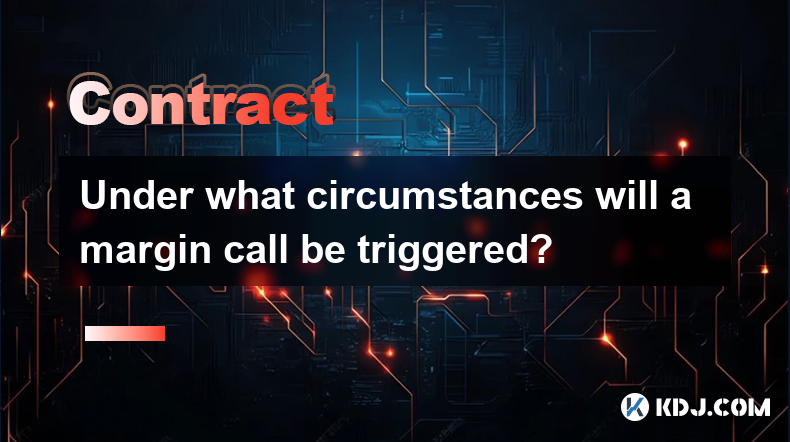
Under what circumstances will a margin call be triggered?
Apr 08,2025 at 02:43pm
Margin trading in the cryptocurrency market allows traders to borrow funds to increase their trading position, potentially amplifying both gains and losses. A critical aspect of margin trading is understanding when a margin call might be triggered, as it can significantly impact your trading strategy and financial health. In this article, we will explor...
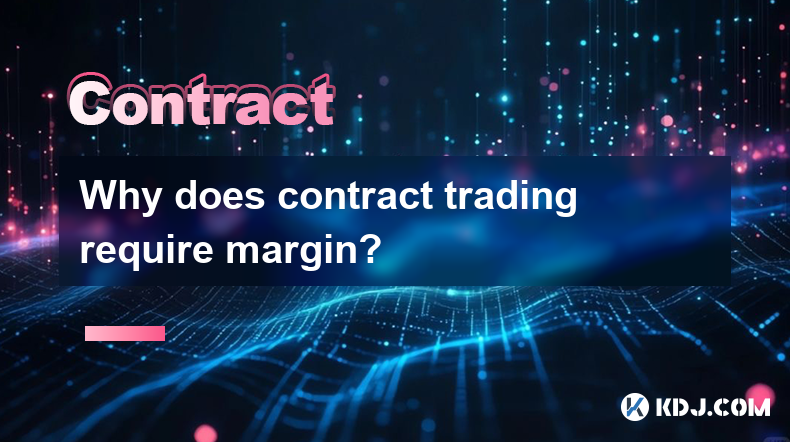
Why does contract trading require margin?
Apr 08,2025 at 02:07pm
Introduction to Contract TradingContract trading in the cryptocurrency market refers to the practice of trading futures or options contracts. These contracts allow traders to speculate on the future price of a cryptocurrency without actually owning the underlying asset. One of the key components of contract trading is the use of margin. Margin is essent...
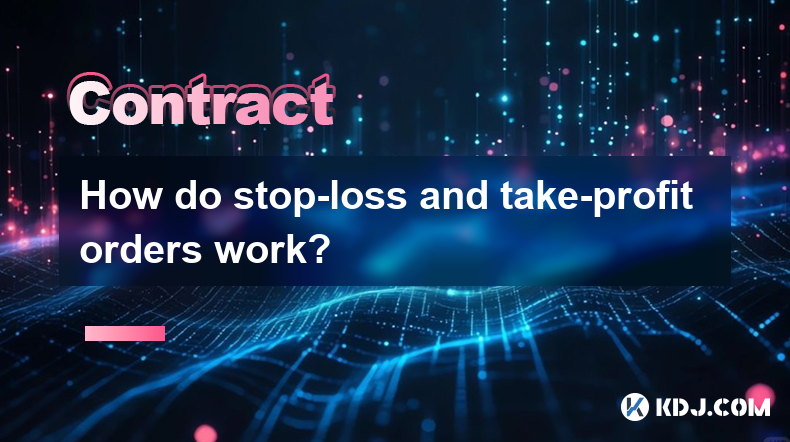
How do stop-loss and take-profit orders work?
Apr 08,2025 at 03:43pm
How do Stop-Loss and Take-Profit Orders Work? In the volatile world of cryptocurrencies, managing risk is crucial for traders. Two essential tools that help in this regard are stop-loss and take-profit orders. These orders are designed to automatically execute trades when certain price levels are reached, helping traders to limit losses and secure profi...
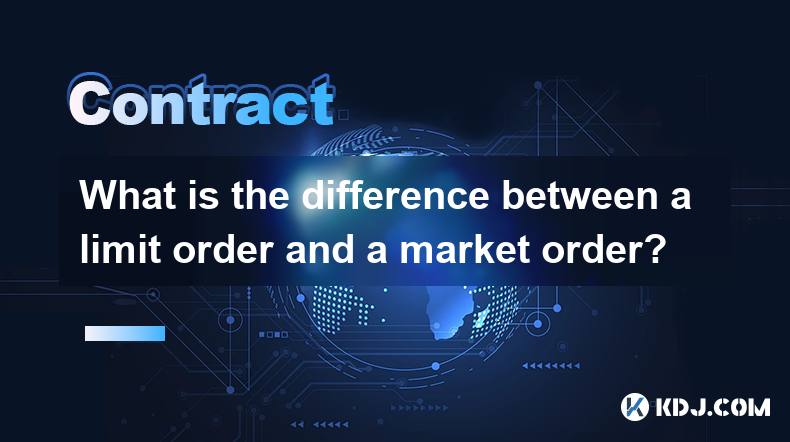
What is the difference between a limit order and a market order?
Apr 08,2025 at 05:14pm
When trading cryptocurrencies, understanding the different types of orders you can place is crucial for effective trading. Two of the most common types of orders are limit orders and market orders. Each serves a different purpose and comes with its own set of advantages and disadvantages. In this article, we will delve into the specifics of both types o...
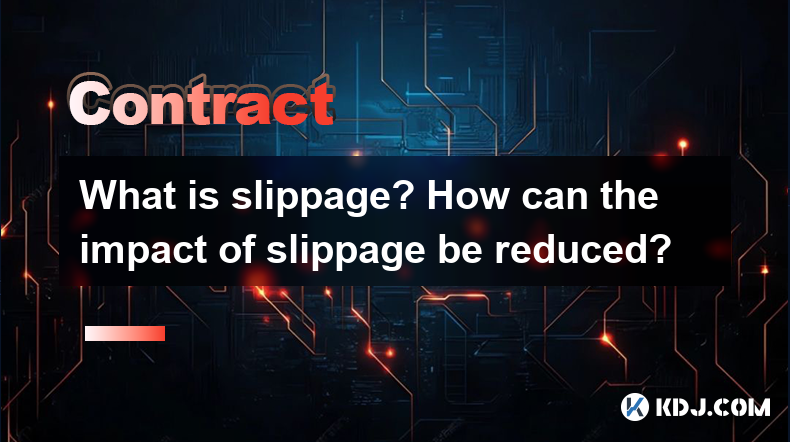
What is slippage? How can the impact of slippage be reduced?
Apr 09,2025 at 04:21am
Slippage in the context of cryptocurrency trading refers to the difference between the expected price of a trade and the price at which the trade is actually executed. This phenomenon occurs due to the volatility and liquidity of the market, and it can significantly impact the profitability of trades. Understanding slippage and learning how to mitigate ...
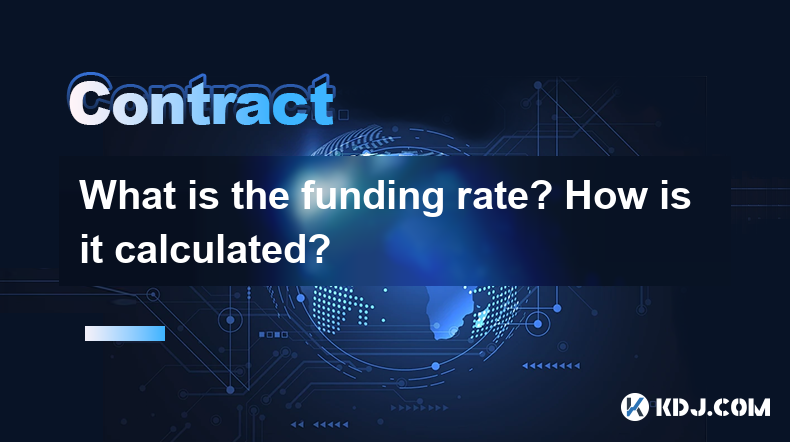
What is the funding rate? How is it calculated?
Apr 08,2025 at 11:35pm
The funding rate is a crucial mechanism in the world of cryptocurrency derivatives, particularly in perpetual futures contracts. It serves as a tool to ensure that the price of a perpetual futures contract remains closely aligned with the spot price of the underlying asset. In this article, we will delve into the concept of the funding rate, its purpose...

Under what circumstances will a margin call be triggered?
Apr 08,2025 at 02:43pm
Margin trading in the cryptocurrency market allows traders to borrow funds to increase their trading position, potentially amplifying both gains and losses. A critical aspect of margin trading is understanding when a margin call might be triggered, as it can significantly impact your trading strategy and financial health. In this article, we will explor...

Why does contract trading require margin?
Apr 08,2025 at 02:07pm
Introduction to Contract TradingContract trading in the cryptocurrency market refers to the practice of trading futures or options contracts. These contracts allow traders to speculate on the future price of a cryptocurrency without actually owning the underlying asset. One of the key components of contract trading is the use of margin. Margin is essent...

How do stop-loss and take-profit orders work?
Apr 08,2025 at 03:43pm
How do Stop-Loss and Take-Profit Orders Work? In the volatile world of cryptocurrencies, managing risk is crucial for traders. Two essential tools that help in this regard are stop-loss and take-profit orders. These orders are designed to automatically execute trades when certain price levels are reached, helping traders to limit losses and secure profi...

What is the difference between a limit order and a market order?
Apr 08,2025 at 05:14pm
When trading cryptocurrencies, understanding the different types of orders you can place is crucial for effective trading. Two of the most common types of orders are limit orders and market orders. Each serves a different purpose and comes with its own set of advantages and disadvantages. In this article, we will delve into the specifics of both types o...

What is slippage? How can the impact of slippage be reduced?
Apr 09,2025 at 04:21am
Slippage in the context of cryptocurrency trading refers to the difference between the expected price of a trade and the price at which the trade is actually executed. This phenomenon occurs due to the volatility and liquidity of the market, and it can significantly impact the profitability of trades. Understanding slippage and learning how to mitigate ...

What is the funding rate? How is it calculated?
Apr 08,2025 at 11:35pm
The funding rate is a crucial mechanism in the world of cryptocurrency derivatives, particularly in perpetual futures contracts. It serves as a tool to ensure that the price of a perpetual futures contract remains closely aligned with the spot price of the underlying asset. In this article, we will delve into the concept of the funding rate, its purpose...
See all articles






















































































